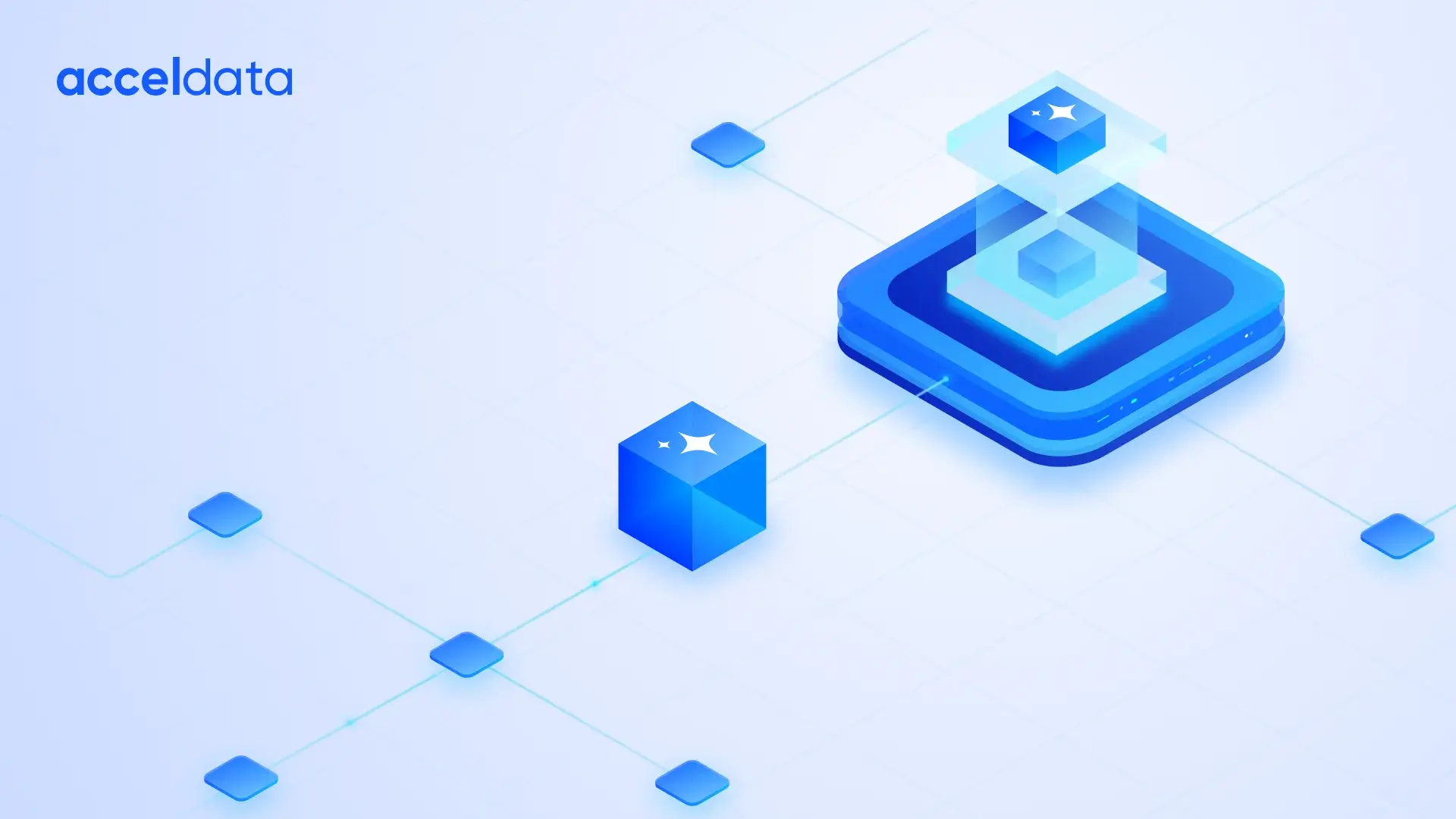Imagine a world where traffic lights adjust in real time to optimize flow, preventing gridlock before it happens. This isn't science fiction—it's the power of streaming data pipelines.
The ability to process and analyze data in real time has become a game-changer for businesses across industries. Real-time data processing has revolutionized industries such as e-commerce, where businesses can instantly adjust pricing based on user behavior.
The global data pipeline market is projected to expand significantly from $8.22 billion in 2023 to $33.87 billion by 2030, with a compound annual growth rate (CAGR) of 22.4%.
The stream processing market is likely to expand at a CAGR of 21.5% from 2022 to 2028. This reflects the rising demand for effective data transformation tools and cloud computing, further emphasizing the critical role of streaming data pipelines in managing data streams.
Understanding Streaming Data Pipelines
A data pipeline is a series of processes that transport and transform raw data from multiple sources to a storage system or end destination, making it ready for analysis. It ensures that data flows efficiently and is processed in real time or batch modes to meet business needs.
Streaming data pipelines are architectural frameworks designed to handle continuous flows of data in real time. Unlike traditional batch processing, which operates on static datasets, streaming pipelines process data as it arrives, enabling immediate insights and actions.
This shift in perspective is essential in today’s digital environment, where data is produced at remarkable speeds and the value of information can quickly diminish.
Real-time data processing offers significant advantages across various industries. In finance, it allows for immediate fraud detection. In e-commerce, it drives personalized recommendations. In manufacturing, it supports predictive maintenance.
Organizations can respond to events as they happen by processing data in motion, gaining a significant competitive edge in their respective markets.
Key Components of Effective Streaming Data Pipeline Architecture
Understanding the key components of an effective streaming data pipeline is crucial for harnessing the power of real-time data. For example, Netflix employs a sophisticated streaming data pipeline architecture to process billions of events daily.
Let’s explore this in more detail:
1. Data ingestion and collection
Data ingestion process lies at the heart of any streaming pipeline. This component is responsible for capturing data from various sources in real time. Efficient data ingestion is crucial for ensuring a smooth flow of information through the pipeline.
Data sources can range from IoT devices and social media feeds to transaction logs and user interactions. Common data ingestion methods include using message queues such as Apache Kafka or Amazon Kinesis, along with APIs and log streaming tools.
The key is to choose ingestion methods that can handle large volumes of data with low latency, ensuring that no valuable information is lost or delayed.
Netflix collects large datasets from various sources, including user interactions and streaming devices. This real-time data encompasses information about which shows users are watching, when they pause, fast-forward, or stop, and how many users are tuned in to a show at any given moment.
To ingest this data, Netflix uses Apache Kafka to handle millions of events per second, ensuring smooth and scalable data intake.
2. Data processing and transformation
Once ingested, the data needs to be processed and transformed in real time. This stage entails cleaning, enriching, and structuring the data to make it suitable for analysis.
Real-time data processing techniques often leverage distributed stream processing frameworks such as Apache Flink, Apache Spark Streaming, or Apache Storm. These technologies enable complex computations on streaming data, such as aggregations, filtering, and joining multiple streams.
For instance, Netflix processes this data to understand user behavior and recommend content. Using technologies such as Apache Flink, the streaming platform processes and enriches this real-time data by filtering out irrelevant events and transforming raw data into valuable insights.
3. Data storage and retrieval
The core principle of streaming involves processing data in real time; however, there is often a need to store the processed data for further analysis or compliance purposes. This requires specialized storage solutions that can handle the high write throughput of streaming data while allowing for efficient retrieval.
Options for storing processed data include time-series databases such as InfluxDB, distributed storage systems such as Apache Cassandra, or cloud-based solutions such as Amazon S3 with Athena for querying. The choice depends on factors such as data volume, query patterns, and retention requirements.
Netflix stores processed data for further analysis and historical insights, such as predicting future viewer trends. It uses a combination of storage solutions, including Cassandra for real-time storage and Amazon S3 for more cost-effective long-term storage, ensuring both efficient access and scalability.
4. Data analysis and visualization
Real-time analytics is where the true value of streaming pipelines is realized. Organizations can gain instant insights and take immediate action by analyzing data as it flows through the pipeline.
Tools for analyzing streaming data include SQL-like query engines for streams, like KSQL for Kafka, as well as real-time dashboarding tools such as Grafana and Tableau. These enable businesses to create live visualizations and set up alerts based on real-time data, facilitating quick decision-making and response to emerging trends or issues.
Netflix leverages real-time data to drive content recommendations, adjust algorithms, and deliver personalized user experiences. It monitors user engagement in real-time with tools such as Apache Druid for real-time analytics and dashboards such as Grafana, allowing for instant recommendations based on viewers' habits and preferences.
5. Monitoring and management
Continuous monitoring is critical for maintaining the health and performance of streaming data pipelines. It's essential to quickly detect and resolve any issues in these real-time systems to prevent data loss or processing delays.
Key metrics to monitor include data throughput, processing latency, error rates, and resource utilization. Implementing robust logging and tracing mechanisms can enable quick identification and troubleshooting of issues. Additionally, setting up alerts for anomalies or performance thresholds ensures that potential problems are addressed proactively.
Netflix utilizes robust tools such as Prometheus and custom monitoring frameworks to track critical metrics in its streaming pipelines, such as data latency, throughput, and error rates. This continuous monitoring enables Netflix to quickly identify and resolve any performance issues, ensuring seamless streaming for millions of users across the globe.
Best Practices for Streaming Data Pipeline Management
Effective management of streaming data pipelines entails a strategic approach. Organizations can build resilient and efficient streaming pipelines that provide reliable, real-time insights by adhering to the following practices:
- Build for scalability and reliability: Architect your pipelines to handle increased loads without compromising performance.
- Implementation of data quality checks: Regularly validate data at each stage to maintain accuracy and integrity.
- Versioning strategy for data schemas: This helps manage evolving data structures without disrupting existing operations.
- Leveraging auto-scaling capabilities: Adapt your infrastructure dynamically to accommodate fluctuating data volumes.
- Implementation of robust error handling: Use dead-letter queues for undeliverable messages to ensure data recovery.
Elevating Your Data Strategy with Streaming Pipeline Architecture
Streaming data pipelines are no longer a luxury; they're a necessity for organizations looking to thrive in the digital age. They provide the agility and insights necessary to stay ahead in today's competitive landscape by facilitating real-time data processing and analysis.
Nearly 30% of data generated is projected to be available in real time by 2025. This underscores the essential role of streaming data in enhancing decision-making, improving customer experiences, and boosting operational efficiencies.
Ready to take your data pipeline management to the next level? Explore Acceldata's platform for enhanced visibility, performance, and reliability in your streaming data architecture.
Acceldata empowers organizations to master streaming data pipelines for real-time data processing by delivering complete end-to-end visibility and monitoring throughout the flow of all data. It helps its platform smoothenly integrate and manage streams of data from a variety of sources, it identifies and resolves issues related to latency, data quality errors, and bottlenecks in real-time. Automating data validation, cleansing, and anomaly detection by Acceldata ensures that real-time data is always accurate, reliable, and ready for immediate use. This enables businesses to make faster, data-driven decisions to optimize operations and respond to changing conditions with greater agility and confidence.
Schedule a demo of Acceldata's solutions today to empower your team to build and manage scalable streaming pipelines that deliver real-time insights.
Summary
Streaming data pipelines play a key role in enabling real-time data processing and efficient data pipeline management. Businesses can harness the full potential of their data streams by implementing best practices and leveraging cutting-edge technologies. As the field evolves, staying informed and adaptable will be essential for success in streaming data pipelines.







.webp)







.webp)
.webp)


